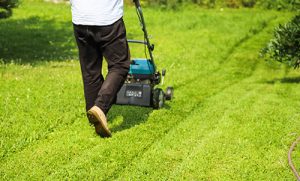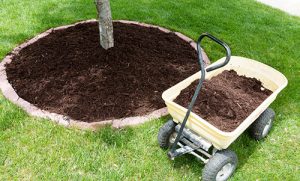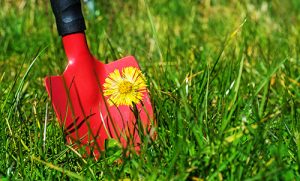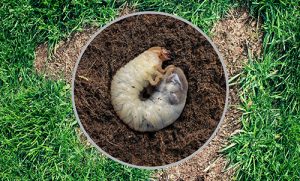Easy Lawn Care Tips When Selling a House
Once you’ve decided to sell your house, you can’t just focus on the inside. It’s also important to make sure your lawn looks good. After all, when a prospective buyer pulls up, they see the outside of the property first, and we all know that curb appeal is essential.
Before you balk at the idea of spending more time and money think about this.
- HomeLight reports that spending less than $300 in lawn care can yield an estimated 352% ROI.
- The experts at Consumer Reports determine that having great curb appeal may increase the overall value of your home by 3-5%.
These numbers are definitely worth the extra effort.
You will likely need to spend a weekend or two tidying up your yard and getting it in tip-top shape. If you are short on time or feel like it’s too much for you to take on, consider hiring a professional lawn care service to help, at least for the initial clean-up.
Keep in mind, there’s a delicate balance between making your lawn look great without making it look like a golf course or magazine ad that needs a ton of work to maintain. Most people looking to buy a home want a nice-looking yard, but they don’t want to be consumed with yard work.
Cut Grass to Proper Height

- Cut cool-season grasses like fescues and Kentucky bluegrass between 2 ½ and 3 inches long.
- Warm-season grasses like St. Augustine, bermudagrass, and zoysia grass can be mowed shorter.
Try to never remove more than ⅓ of the grass when mowing. Taking too much off at one time stresses the plant because it limits the grass’ storage ability and restricts its nutrient supply.
Don’t Remove Grass Clippings
Many homeowners like their lawns to be perfectly manicured without any grass clippings left after mowing, but it’s healthy for your lawn to leave them. Grass clippings contain nitrogen and potassium — the same nutrients as fertilizers, although in smaller amounts. When mulching the clippings, you are helping to provide a bit of nutrients and water every time you mow.
If you are mowing your grass correctly — removing no more than ⅓ of the grass each time — the clippings won’t be overly thick or clump up as you mow.
However, if the lawn is diseased, bag clippings and dispose of them.
Trim Along Edges and Around Trees

If you want to cut down on trimming, mulch around the base of trees and shrubs. Then when you mow, you can overlap the mulch slightly, eliminating areas that need trimming.
Water Properly
Watering is critical for maintaining strong, healthy grass. Watering correctly includes watering at the correct time of day and watering the right amount. If you don’t have an automatic sprinkler system, it may be worth considering the cost of having one installed.
Some tips for watering correctly include:
- Water early in the morning after the sun comes up, but before the temperatures get too high.
- Avoid watering in the evening or at night because the grass may not dry before nightfall. Wet grass overnight increases the chance of disease and fungal growth.
- Avoid watering during the heat of the day to minimize evaporation.
- Instead of frequently watering a little bit, water less often but provide more water. Frequent, short waterings keep the root system in the upper layer of the soil, and the grass can’t handle periods of dryness as well. Watering more, less often encourages the root system to grow deeper in the soil, making your grass more heat and drought tolerant.
Fertilize Correctly and on Schedule
Fertilizer not only keeps your grass green, but it also keeps it strong and healthy, making it better able to resist diseases and handle environmental stresses. Fertilize your lawn on a schedule, following recommendations for your grass type. Local garden centers may detail a 3 or 4 step program for the season, or hire a service.
Each application is specifically formulated to give the grass what it needs at that specific time of year — needs change based on temperature, growth stage, etc.
- Apply fertilizer when the grass is dry, but not immediately before heavy rain.
- Never apply at a higher rate than listed on the product label.
- Use a broadcast or drop spreader for even, consistent application.
Fix Bare Spots
Not only do they look shabby — and not in a good way — bare spots are problematic for your lawn. If there isn’t grass growing in spots, the soil can erode or weeds can sprout. Filling bare spots in looks better overall and helps improve the lawn’s vigor.
To fill in small spots, start by removing any dead grass, and then use a garden rake to break up the top couple of inches of soil. Spread lawn repair mix evenly across the soil surface, making sure to follow the label directions for thickness. Keep the soil moist (which could mean watering these patches 2-3 times a day for about 10 minutes) until the seeds germinate and sprout.
For larger bare sections, consider purchasing sod and installing it. The cost is higher, but the results are seen much quicker.
Select the Right Type For Your Lawn
There is more to think about than simply how the blades of grass look when they’re grown when it comes to seeding a lawn. You need to ensure you are using the proper grass type for your climate, for the sun exposure in your yard, and one that meets the needs of your lifestyle.
Grasses are designated as cool-season or warm-season types depending upon the temperature they need or prefer for optimum growth. This means the two types grow slightly differently and demand different growing conditions.
- Cool-season grasses grow in the Northern United States, where summers are milder, but winters may be harsh with snow. They don’t grow until air temperatures are above 40 to 42°F and put on the most growth when temps are between 65 and 75°F.
- Warm-season grasses grow in the South, where summer temperatures are hot, and winters are mild, without much snow. They won’t grow in the spring until soil temps hit 50°F and put on most biomass when average temperatures are between 85 and 95°F. They are more adapted to drought and high temps.
However, the challenge lies in that part of Kansas is in the transition zone, an area that is a blend of Northern and Southern climates with temps that don’t fit into the classifications for either type of grass. Living in the transition zone makes it, so neither cool-season nor warm-season grasses perform exceptionally well.
Therefore, you must weigh the advantages and disadvantages of each grass type and choose which best fits your lawn. Cool-season types grown in the transition zone are tall fescue, perennial ryegrass, and Kentucky bluegrass. Homeowners also have luck with zoysia grass and Bermuda grass, both warm-season types.
Beyond seasonal temps, keep in mind you also need to match the type of grass to the amount of sunlight your yard receives. Ryegrass grows well in low sun, so you can have thick grass even in shady spots. On the opposite end of the sunlight spectrum, zoysia and St. Augustine grass both do well in direct sunlight so you won’t have to worry about the grass turning pale or “bleaching” due to sunscald. Select a robust type if you have children or pets that traffic the yard.
Don’t Let Weeds Take Control of the Lawn

Having a weed-free (or as nearly weed-free as you can get it) lawn will improve its appearance and vigor significantly. You can either go out and remove weeds by hand — use a weed popper tool to help get the roots out — or you can opt to spray with an herbicide that is formulated to only kill weeds.
For lawns where weeds are out of hand, hire a professional weed control service to come in spray to get them under control.
If it’s early in the season and the grass is just starting to grow, apply a pre-emergent herbicide that helps prevent weed seeds from germinating.
Treat for Common Lawn Pests

Or hire a professional lawn insect & grub control service to come and treat your lawn.
Do You Need Some Help Getting Your Lawn Ready?
We would love to help you. Get a Free Estimate today for help with your lawn care needs by a RYAN lawn care expert!









